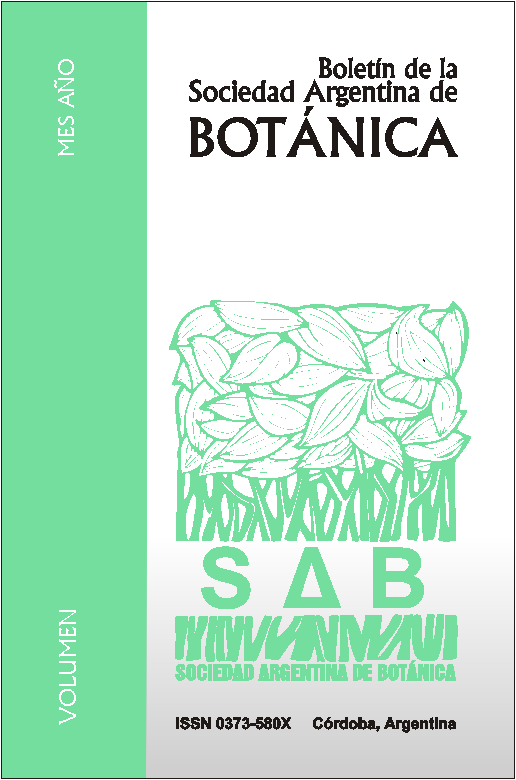Ethnobotanical approaches of edible native fruits’ species and practices of the present. Contributions for the interpretation of the Late Pre-Hispanic Period of Cerro Colorado (Córdoba, Argentina).
DOI:
https://doi.org/10.31055/1851.2372.v53.n1.19912Keywords:
North of Córdoba, paleoethnobotany, Chaco resources, edible plants, traditional practices.Abstract
Ethnobotanical approaches of edible native fruits’ species and practices of the present. Contributions for the interpretation of the Late Pre-Hispanic Period of Cerro Colorado (Córdoba, Argentina). Ethnobotanical research provides important information from the present upon which paleoethnobotany, a discipline that interprets archaeobotanical remains, stands in order to infer possible uses and practices performed in the past by human groups. This study aimed to, first, identify and document native plant species producing edible fruits currently used by the residents of Cerro Colorado and surrounding areas (Córdoba, Argentina). In second place, it intended to detail practices associated with their use as food (preharvest, harvest, postharvest, consume, discard). In order to achieve both objectives, open and semi-structured interviews and participant observation were performed. As last objective, by evaluating the obtained results, this work tried to approach to the different activities’ spheres where vegetables are implied, which could have occurred in the past A total of 20 species whose fruits are recognized as food were identified, 13 of them are processed somehow before being consumed and the rest are ingested raw, just as “fresh fruit”. Besides, several products were registered such as arrope, jam, jelly and flour prepared from edible fruits. For the archaeologic analysis, information from Quebrada Norte 7 site (Sierra del Norte, Córdoba) is available. Data integration let us perceive actual postharvest practices that probably correlate with past practices, and the existence of discontinuation of wild resources consuming forms.Downloads
Published
Issue
Section
License
Provides immediate and free OPEN ACCESS to its content under the principle of making research freely available to the public, which fosters a greater exchange of global knowledge, allowing authors to maintain their copyright without restrictions.
Material published in Bol. Soc. Argent. Bot. is distributed under a Creative Commons Attribution-NonCommercial-ShareAlike 4.0 International license.





